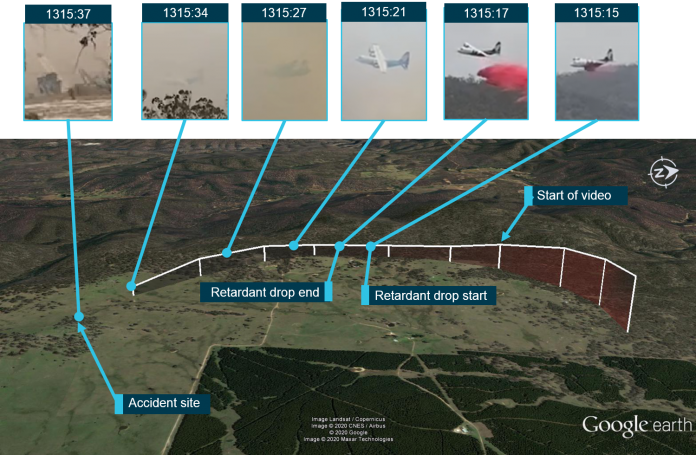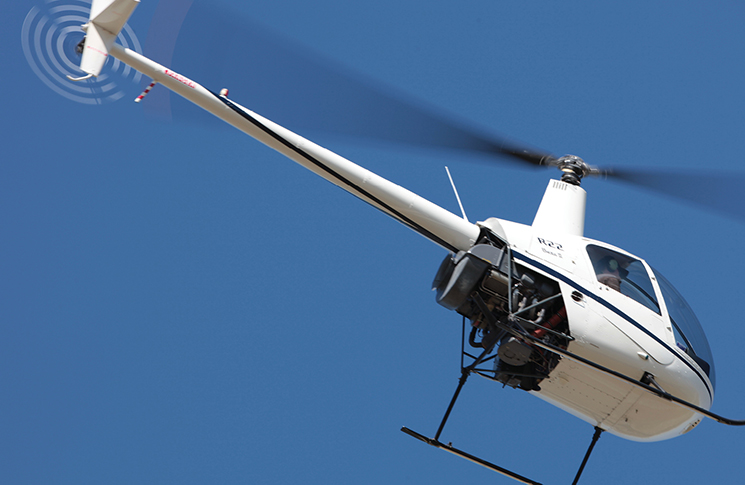Winds and turbulence on the day a Lockheed C-130 Hercules crashed in the Snowy Mountains were strong enough to provoke a 45-degree uncommanded roll in a Boeing 737 and trigger that aircraft’s windshear alert.
The Australian Transport Safety Bureau yesterday released its interim report into the crash of the C-130 Hercules large air tanker at Peak View, near Cooma, NSW, on 23 January this year.
ATSB Chief Commissioner Greg Hood said, ‘The interim report does not contain findings nor identify safety issues, which will be contained in the final report. However, it does detail the extensive evidence gathered to date, which has helped ATSB investigators develop a detailed picture of this tragic accident’s sequence of events.’
The investigation team drew upon ADS-B transponder data, data recorded by the aircraft’s SkyTrac tracking system and video of the accident taken by firefighters on the ground, to develop an understanding of the aircraft’s flight path.
A Boeing 737 large air tanker from the same firefighting operator as the Hercules had taken off from Richmond, NSW in the morning to fight fires near Adaminaby, NSW.
While assessing the conditions in the Adaminaby area, the 737 crew reported experiencing uncommanded rolls up to 45 degrees (due to wind) and a windshear warning from the aircraft. The 737 pilot decided to operate on the upwind side of the hills to avoid lee‑side mechanical turbulence and the aircraft successfully deployed a load of fire retardant.
The 737 crew sent a text message to the pilot of a spotter aircraft who had elected not to fly because of the conditions. The message said conditions were ‘horrible down there. Don’t send anybody and we’re not going back’.
The 737 crew spoke with the Hercules crew to advise them of the severe conditions. The Hercules crew flew to their planned drop, near Adaminaby but after several circuits at 2000 feet AGL advised conditions were too rough for a safe drop. They flew to a secondary drop zone at Peak View. Again they flew three circuits, at about 1500 feet, 500 feet and 1000 feet AGL before the drop circuit. This was flown at about 190 feet AGL with a drop time of about two seconds to release 4500 litres of fire retardant.
Photos and videos show at the start of the drop, the aircraft was banked about 10 degrees left with the flaps set at 100 per cent and a ground speed of 144 knots. The videos showed the aircraft banking 17 degrees left at the end of the drop. Four seconds later the aircraft had a pitch-up attitude of about 12 degrees and a 30 degree left bank. Over the next 1.5 seconds, the aircraft’s angle of bank reduced to about 22 degrees and the pitch reduced to 10 degrees. The aircraft then became obscured by smoke. When it came back into view, videos showed it rolling from a left to a slight right bank. It was last seen at a low height and in a left bank. The three crew members were killed and the aircraft was destroyed when it struck the ground.






[…] crash, at Good Good fire-ground, at Peak View, near Cooma, NSW, killed 3 US aircrew on 23 January 2020. The ATSB report, issued this morning, was delayed by lack of information from the aircraft’s […]